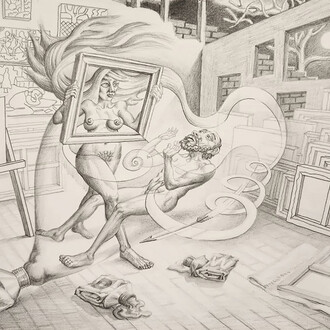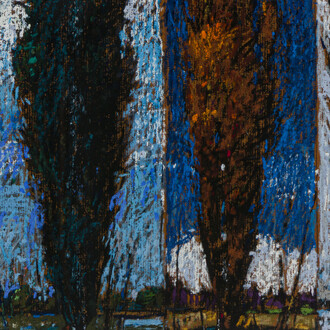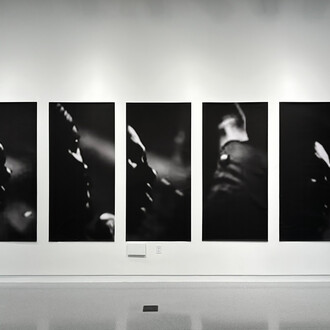This exhibition is alive and changing every day.
Did you know one of our biggest exhibition spaces is outside and free to visit year-round? Stroll down winding paths, pause on a bench to enjoy a conversation, and take a closer look at the life all around you in the Rice native gardens. Framing the museum’s exterior, the gardens are home to a variety of native plants—over 100 species in total. In addition to colorful flowers and tall grasses, you can spot a variety of animals: birds, bats, grasshoppers, butterflies, and much more. They all play a role in this ecosystem, from pollinating plants to creating healthy soil. The exhibition is presented in both English and Spanish. La exhibición está presentada en inglés y español.
Exhibition highlights
- Birdhouses for Purple Martins, which migrate to Chicago in the spring.
- A 20-foot-tall bat house.
- Bronze Spirit totems, abstract sculptures by Herb Alpert.
- Educational flip signs that identify different plants throughout the gardens.
Land acknowledgment
We acknowledge that the Field Museum resides within the traditional homelands of many Indigenous nations:
- Hoocąk (Winnebago/Ho’Chunk), Jiwere (Otoe), Nutachi (Missouria), and Baxoje (Iowas).
- Kiash Matchitiwuk (Menominee).
- Meshkwahkîha (Meskwaki).
- Asâkîwaki (Sauk).
- Myaamiaki (Miami), Waayaahtanwaki (Wea), and Peeyankihšiaki (Piankashaw).
- Kiikaapoi (Kickapoo).
- Inoka (Illini Confederacy).
- Anishinaabeg (Ojibwe), Odawak (Odawa), and Bodéwadmik (Potawatomi).
The Field Museum recognizes and is grateful for the Original Peoples who laid the foundation for the City of Chicago, and for the diverse Indigenous nations that reside in Chicago today. Our history as a museum began in 1893, and the Field’s collection, research, and community partners continue to tell a story about nature and culture that is vast and complex. The ways we tell stories are always evolving and are enriched by what we learn from listening to many different voices. We are committed to bringing Native American voices to the forefront as we transform the Native North America Hall here at the Field. As part of an ongoing effort to celebrate and tell the histories and contemporary experiences of Native American people, we also recognize the Native American presence on the land where our building is located.
Why native plants?
Native plants are ones that thrive in a certain region and evolve over time as a key part of the environment. Here in Illinois, many of our native plants are found in prairies: flat, open grasslands that are suited to cold winters and hot summers. But there weren’t always native plants in our backyard. When the Field Museum was first built, it was surrounded by hard clay and landfill. After that, it was a grassy lawn for many years. Envisioning a beautiful landscape that reflects the region’s ecological makeup, we set about creating the native gardens you see today. The process included biodiversity surveys to provide baseline data, studies of plants that thrive nearby, and conversations with community partners. Today, the gardens are a unique site where research happens alongside educational programs and cultural celebrations. Native plants help keep the soil healthy, provide food and home for native animal species, and retain water—which prevents runoff into nearby Lake Michigan. Field researchers can also study changes over time by analyzing soil samples, documenting the species found in the gardens, and tracing the effects of climate change.
















